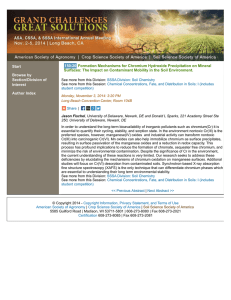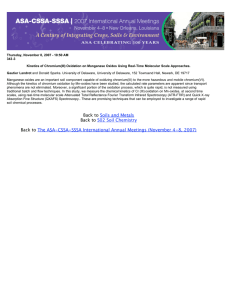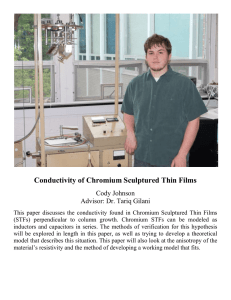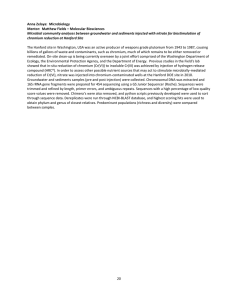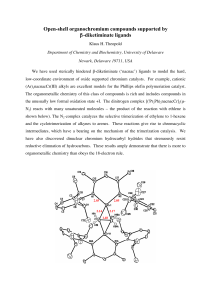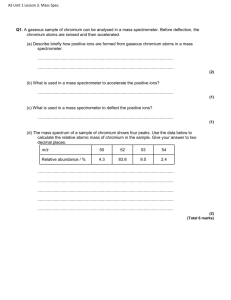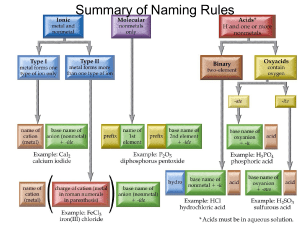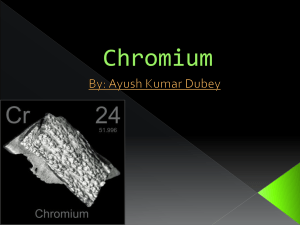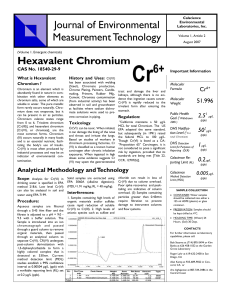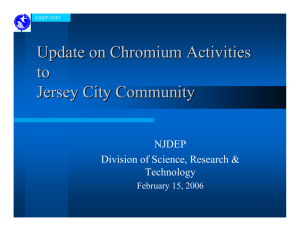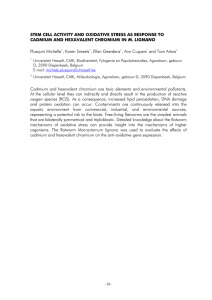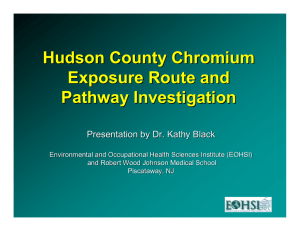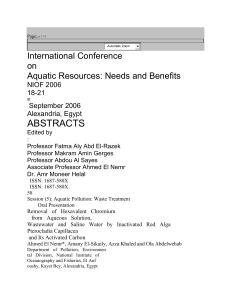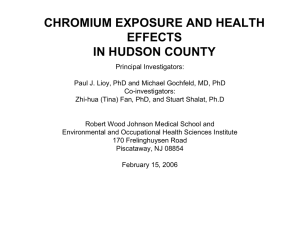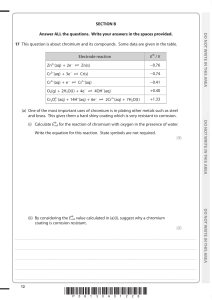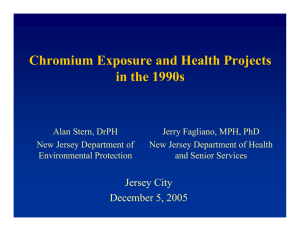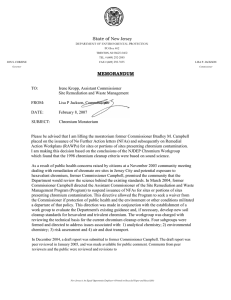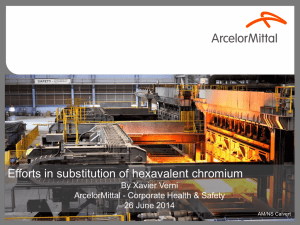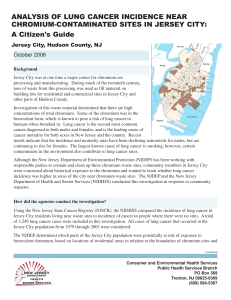GEOC: Division of Geochemistry chromium in the soil environment
advertisement
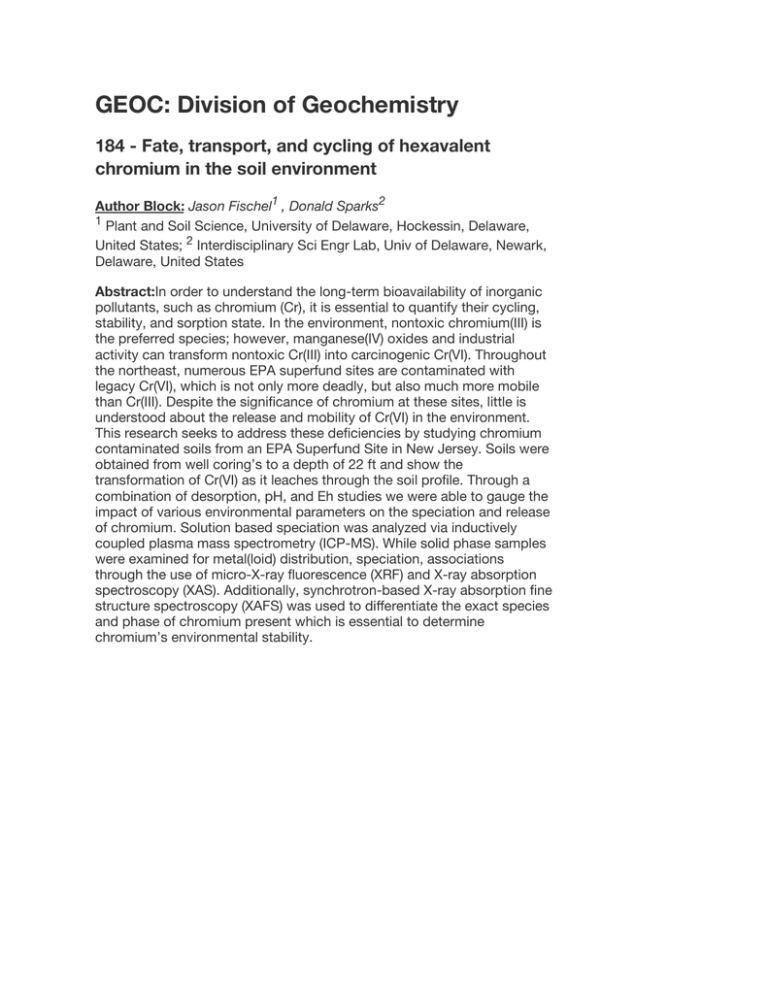
GEOC: Division of Geochemistry 184 - Fate, transport, and cycling of hexavalent chromium in the soil environment Author Block: Jason Fischel1 , Donald Sparks2 1 Plant and Soil Science, University of Delaware, Hockessin, Delaware, United States; 2 Interdisciplinary Sci Engr Lab, Univ of Delaware, Newark, Delaware, United States Abstract:In order to understand the long-term bioavailability of inorganic pollutants, such as chromium (Cr), it is essential to quantify their cycling, stability, and sorption state. In the environment, nontoxic chromium(III) is the preferred species; however, manganese(IV) oxides and industrial activity can transform nontoxic Cr(III) into carcinogenic Cr(VI). Throughout the northeast, numerous EPA superfund sites are contaminated with legacy Cr(VI), which is not only more deadly, but also much more mobile than Cr(III). Despite the significance of chromium at these sites, little is understood about the release and mobility of Cr(VI) in the environment. This research seeks to address these deficiencies by studying chromium contaminated soils from an EPA Superfund Site in New Jersey. Soils were obtained from well coring’s to a depth of 22 ft and show the transformation of Cr(VI) as it leaches through the soil profile. Through a combination of desorption, pH, and Eh studies we were able to gauge the impact of various environmental parameters on the speciation and release of chromium. Solution based speciation was analyzed via inductively coupled plasma mass spectrometry (ICP-MS). While solid phase samples were examined for metal(loid) distribution, speciation, associations through the use of micro-X-ray fluorescence (XRF) and X-ray absorption spectroscopy (XAS). Additionally, synchrotron-based X-ray absorption fine structure spectroscopy (XAFS) was used to differentiate the exact species and phase of chromium present which is essential to determine chromium’s environmental stability.

